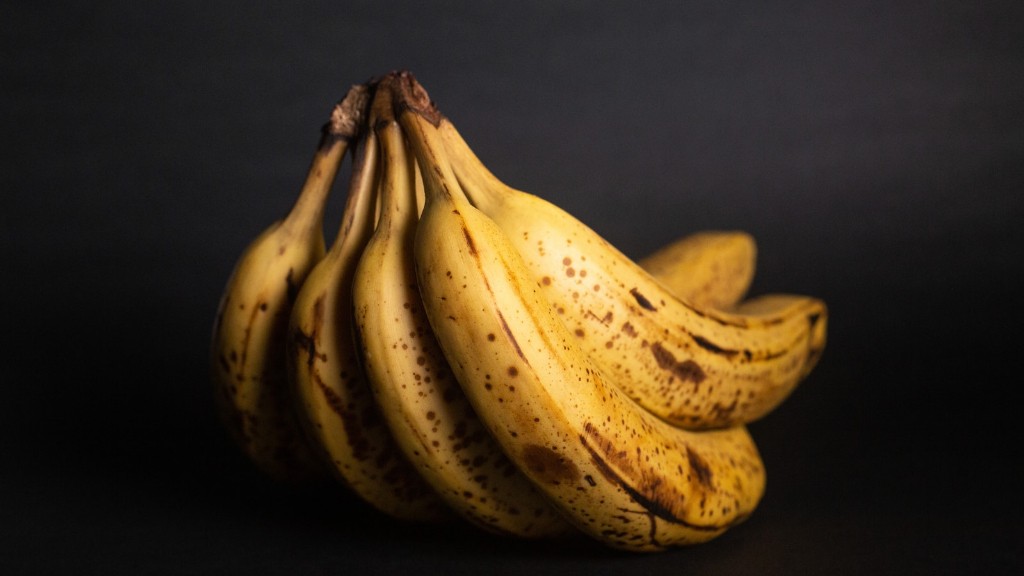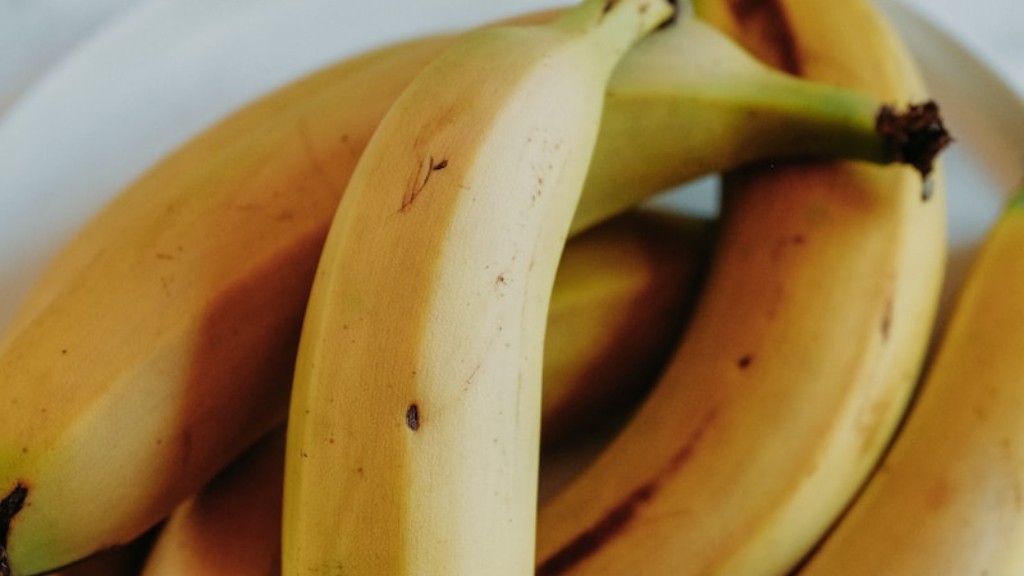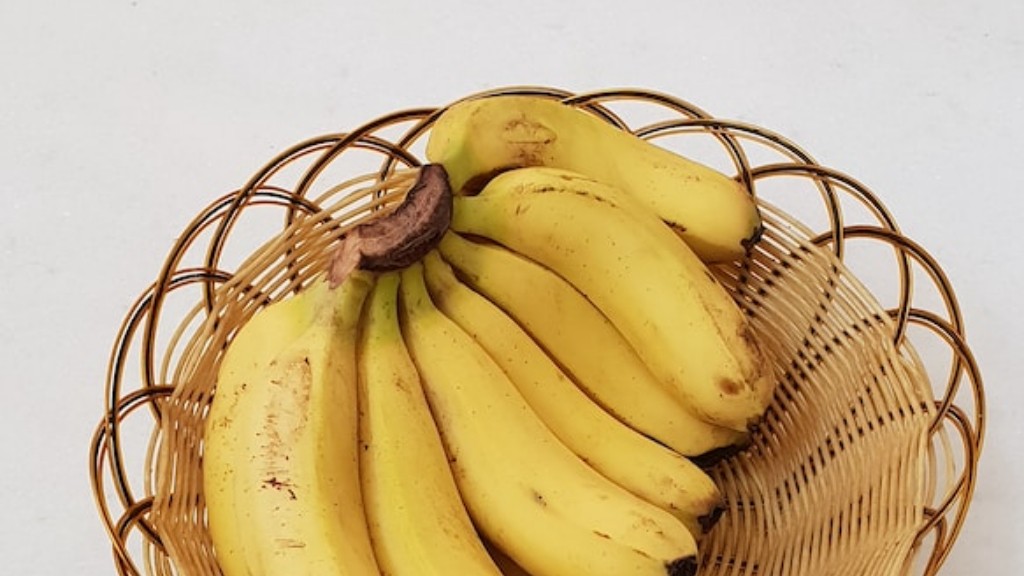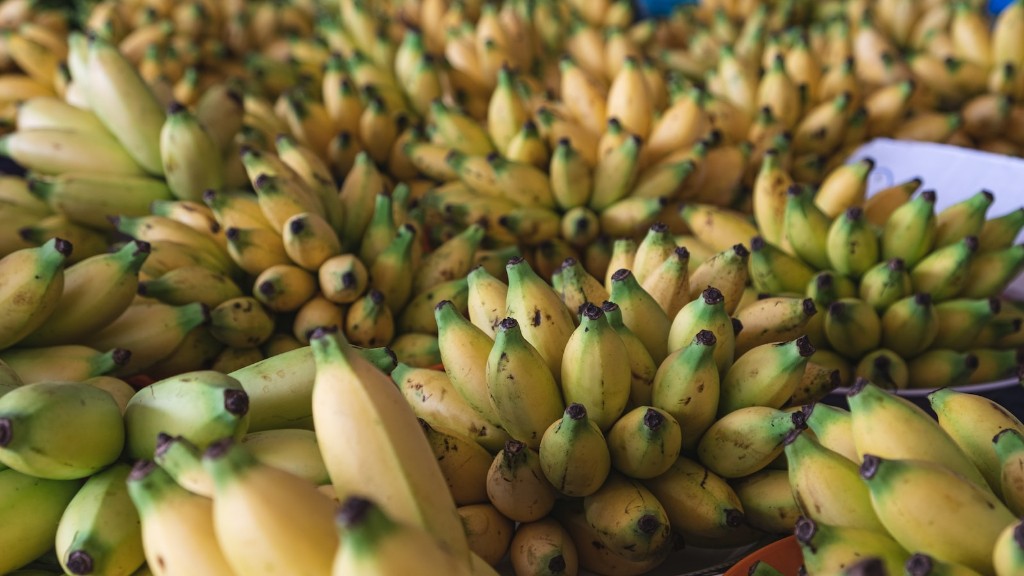Venomous Bananas Spiders
Banana spiders, also known as golden-orb weaver spiders, are generally considered to be the most venomous spiders of their size. These common household spiders are found in the tropical and subtropical regions of many countries, including the United States. Surprisingly, the banana spider does not have dangerous venom; it doesn’t even have blood in its body. It’s mostly harmless unless provoked.
Banana spiders produce a sticky web with a yellowish hue, hence the name “golden-orb.” In addition to giving the web an unusual appearance, the web is also known to have a very strong hold on its prey. The spider then paralyzes the prey with venom injected through its fangs. Although they have the ability to deliver a painful bite, their venom is not strong enough to cause any serious damage or disability.
In the United States, one of the most frequently encountered banana spider varieties is known as the “brown widow” (Latrodectus geometricus). Brown widows are related to the dreaded black widow spider, but do not have nearly the same strength of venom or aggressive behavior. As a result, a bite from a brown widow is relatively harmless. Claims of the species being dangerously venomous are typically exaggerated or false.
It’s worth mentioning that some individuals may have more of an allergic response to different spider bites, including those of the banana spider. Even with an allergic reaction, the symptoms of a banana spider bite are generally mild and nothing more than uncomfortable and irritating. It may produce itching, swelling, reddening of the skin, or a numb toe for several hours.
Top experts usually recommend avoiding contact with or handling banana spiders. Keep any areas where spiders might enter your home, like windows, doors, and cracks, clear and closed. When dealing with a population of banana spiders, it is usually better to have a professional pest control service take care of the problem. Most home remedies, such as spraying pesticide, are ineffective.
Risk of Infestation
Banana spiders can enter a home undetected, as they are very small, usually no longer than one inch. Their webs may become fairly large and difficult to remove. Since they have highly reproducible habits, if there is one spider, there are most likely more lurking in the background. To identify a banana spider infestation,it’s important to look for webs or the spiders themselves.
As banana spiders primarily feed on other insects, an increase in these pests around or within your home is a sign of a potential infestation. To monitor such activity, set up spider traps around your home. For a more thorough inspection, calling a pest-control expert is also an option.
Habitat and Diet
Banana spiders prefer warm, humid conditions and are usually found in sheltered and protective places, such as dark corners, beneath furniture, and in basements. Bananas spiders’ diet consists mainly of flies, mosquitoes, moths, and other small bugs. In addition, their strong web is capable of trapping larger prey, such as small birds, mice, or other spiders.
Protective Measures
If you do suspect that you have a banana spider infestation in your home, it is important to take protective measures to avoid them. Wear long, loose-fitting clothes with long sleeves, gloves, and shoes when entering protected and potentially infested areas.
Also, be sure to inspect your furniture and other potential hiding places. If you find any webs, wear gloves to remove them and clean the affected areas. You should also inspect any items that you bring into your home, as banana spiders can be found in clothing, cardboard boxes, and other affected items. Lastly, it’s important to keep the infested area clean and to keep food in airtight containers.
Diseases Transmitted by Spiders
The bite of a banana spider may carry some micro-organisms that can cause an infection. The more common symptoms of such an infection are fever, headaches, nausea, vomiting, and abdominal pain. In the US, such infections are rare, although in other parts of the world, they are more common. In some cases, serious illnesses, such as hepatitis and meningitis, can result from a banana spider bite.
Apart from infections, other diseases that banana spiders can transmit are Lyme disease, spotted fevers, and Colorado tick fever. All the above can be treated with antibiotics. In the case of an allergy, people should seek medical help right away.
Sociocultural Impact of Bananas Spiders
Since bananas spiders are mostly harmless, their presence is more of an annoyance and a symbol of fear for the public, especially when observed in populated places like churches, schools, and other crowded areas. Public hysteria and the notion of danger often associated with spiders in general can easily lead to overreaction when it comes to these spiders.
In order to avoid running into a group of banana chickens, it’s best to keep vegetation to a minimum around the structure. That way, spiders are less likely to enter the site. Education is also paramount when it comes to preventing public fear. Familiarizing yourself with banana spiders’ appearance and behavior can help alleviate any unfounded fear.
Medicinal Uses of Spiders
It may come as a surprise, but spiders have been used in medical treatments since ancient times. One of the most common uses of spiders is in the use of antivenom, as some spider-derived toxins can be used to fight poisonous snake venom. In some cases, spiders are also used in the field of nanobiology, or the use of nanotechnology for medical treatments. In addition, spider venom has been studied for use in drug development and pharmaceuticals.
More recently, spiders have also been used to develop bioelectronic implants. These implants are used to control and/or monitor electrical signals in the body. Another form of medical spider therapy is the use of spider webs for wound dress. Studies have shown that spider webs can be used to promote faster healing of minor wounds.
Endangerment of Bananas Spiders
Due to urban expansion, many species of spiders, including banana spiders, are becoming endangered. Also, these spiders can be victims of habitat destruction, when vegetation is removed. Since they feed on other insects, the disappearance of these species can put them at risk of survival. For this reason, it is important to ensure that their habitat remains protected and preserved.
In addition, banana spiders can be victims of persecution, as they are often seen as dangerous creatures. Since these spiders have value in the field of medicine and biology, it is important to recognize their importance and to take measures to protect them and their habitat.
Conclusion
Banana spiders are typically considered to be the most venomous spiders of their size, but their venom is actually quite weak and not dangerous to humans. These spiders can be found in several parts of the world and they make for an interesting study, as they can be beneficial to humans through medical treatments. Due to habitat destruction, many species of these spiders are currently in danger of extinction; for this reason, it is important to ensure that their habitat is protected and preserved.




